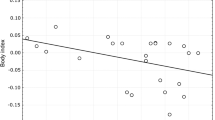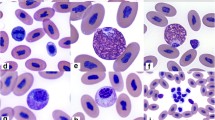Abstract
Plasma metabolites such as triglyceride (TRIG) can be useful indicators of when birds are in a state of fattening or fasting, although the challenges of processing, storing, and analyzing field-collected plasma samples may limit its use by field ornithologists. We evaluated the use of a field-usable point-of-care (POC) analyzer (CardioChek PA analyzer) for measuring TRIG concentrations in the plasma of male American Woodcock (Scolopax minor) captured during their spring courtship period and compared those measures to those from standard laboratory analyses of the same plasma samples. Plasma TRIG measured in the field with the POC analyzer was highly repeatable and precise, but not accurate compared to lab-measured values. The inaccuracy of the POC analyzer may be due to the effects of environmental conditions on the analyzer’s function or to specific problems associated with analyzing woodcock blood. We conclude that the field-usable POC analyzer does not provide an accurate alternative method for measuring circulating TRIG in woodcock during cold springs in northern breeding areas. Given the analyzer has proven accurate for estimating circulating TRIG in some other bird species, we outline a two-phase pilot study that field ornithologists can use to understand the operating limits of this analyzer for their target species prior to field use.
Zusammenfassung
Messung von Triglyceriden bei frei lebenden Vögeln: Test und Bewertung eines vor Ort im Feld einsetzbaren Analysators bei Kanadaschnepfen
Plasmastoffwechselprodukte wie z.B. Triglyceride (TRIG) können nützliche Indikatoren dafür sein, wann sich Vögel in einem Gewichtszunahme- oder –abnahmestadium befinden, obwohl die Probleme bei der Verarbeitung, Lagerung und Analyse von im Feld gesammelten Plasmaproben ihre Verwendung durch Ornithologen im Feld vermutlich einschränken. Wir testeten die Benutzung eines vor Ort verwendbaren Analysegeräts (CardioChek PA-Analysator) zur Messung der TRIG-Konzentrationen im Plasma männlicher Kanadaschnepfen (Scolopax minor), die während ihrer Balzzeit im Frühjahr gefangen wurden und verglichen diese Messwerte mit denen von Standard-Laboranalysen derselben Plasmaproben. Die mit dem Analysegerät im Feld unmittelbar gemessene Plasma-TRIG-Konzentration war hochgradig wiederholbar und präzise, aber nicht wirklich genau im Vergleich zu den im Labor gemessenen Werten. Die Ungenauigkeit beim Vor-Ort-Analysegerät kann auf Einwirkungen der Umgebungsbedingungen auf die Funktion des Geräts oder auf spezifische Probleme im Zusammenhang mit der Analyse von Kanadaschnepfenblut zurückzuführen sein. Wir schließen aus unseren Untersuchungen, dass der feldtaugliche Analysator keine ausreichend genaue, alternative Methode zur Messung des zirkulierenden TRIG bei Kanadaschnepfen während des kalten Frühjahrs in den nördlichen Brutgebieten darstellt, obwohl er unter günstigeren Bedingungen und bei anderen Vogelarten für Feldornithologen nützlich sein mag.



Similar content being viewed by others
Data availability
The datasets generated during and analyzed during the current study are available from the corresponding author on reasonable request.
References
Albano N, Santiago-Quesada F, Villegas A, Sànchez-Guzmàn J, Masero J (2016) Plasma metabolites correlate with weekly body mass changes in migrating Black-tailed Godwits Limosa limosa feeding on different diets. Ornithology 157:201–207. https://doi.org/10.1007/s10336-015-1268-4
Altman D, Bland J (1983) Measuring in medicine: the analysis of method comparison studies. J Roy Stat Soc 32:307–317. https://doi.org/10.2307/2987937
American Society for Veterinary Clinical Pathology (2013) Quality assurance for point-of-care testing in veterinary medicine. http://www.asvcp.org/pubs/qas/index.cfm. Accessed 20 Mar 2021. https://doi.org/10.1111/vcp.12099
Anteau M, Afton A (2008) Using plasma-lipid metabolites to index changes in lipid reserves of free-living Lesser Scaup (Aythya affinis). Auk 125:354–357. https://doi.org/10.1525/auk.2008.06255
Atkinson G, Nevill A (1998) Statistical methods for assessing measurement error (reliability) in variables relevant to sports medicine. Sports Med 26:217–238. https://doi.org/10.2165/00007256-199826040-00002
Bland J, Altman D (1986) Statistical methods for assessing agreement between two methods of clinical measurements. The Lancet 1:307–310
Bland J, Altman D (1999) Measuring agreement in method comparison studies. Stat Methods Med Res 8:135–160. https://doi.org/10.1177/096228029900800204
Brenner S, Buffum J, Tefft B, McWilliams S (2019) Landscape context matters when American woodcock select singing grounds: results from a reciprocal transplant experiment. Condor 121:1–11. https://doi.org/10.1093/condor/duy005
Cerasale D, Guglielmo C (2006) Dietary effects on prediction of body mass changes in birds by plasma metabolites. Auk 123:836–846. https://doi.org/10.1093/auk/123.3.836
Datta D (2017) blandr: a Bland-Altman method comparison package for R. Zenodo. https://doi.org/10.5281/zenodo.824514
Devost I, Hallot F, Milbergue M, Petit M, and Vézina F (2014) Lipid metabolites as markers of fattening rate in a non-migratory passerine: effects of ambient temperature and individual variation. Comp Biolchem Physiol Part A 177:18–26. https://doi.org/10.1016/j.cbpa.2014.07.014
Fair J, Paul E, Jones J, Clark A, Davie C, Kaiser G (2010) Guidelines to the use of wild birds in research. Ornithological Council, Washington, D.C.
Guglielmo C, O’Hara P, Williams T (2002) Extrinsic and intrinsic sources of variation in plasma lipid metabolites of free-living Western Sandpipers (Calidris mauri). Auk 119:437–445. https://doi.org/10.1093/auk/119.2.437
Guglielmo C, Cerasale D, Eldermire C (2005) A field validation of plasma metabolite profiling to assess refueling performance of migratory birds. Physiol Biochem Zool 78:116–125. https://doi.org/10.1086/425198
Hudgins J, Storm G, Wakeley J (1985) Local movements and diurnal-habitat selection by male American woodcock in Pennsylvania. J Wildl Manag 49:614–619. https://doi.org/10.2307/3801682
Irvine K, Mans C, Friedrichs K (2018) Validation of 2 point-of-care meters for measuring triglycerides in chickens using whole blood and plasma. J Vet Diagn Invest 30:197–204. https://doi.org/10.1177/1040638717739059
Irvine K, Mans C, Friedrichs K (2019) Method comparison using 2 point-of-care meters and a reference meter for measuring blood triglycerides in psittacine birds. J Avian Med Surg 33:229–234. https://doi.org/10.1647/2018-374
Jenni-Eiermann S, Jenni L (1994) Plasma metabolite levels predict individual body-mass changes in a small long-distance migrant, the Garden Warbler. Auk 111:888–899. https://doi.org/10.2307/4088821
Lindholm C, Altimiras J (2016) Point-of-care devices for physiological measurements in field conditions. A smorgasbord of instruments and validation procedures. Comp Biochem Physiol A 202:99–111. https://doi.org/10.1016/j.cbpa.2016.04.009
Ludbrook J (2010) Linear regression analysis for comparing two measurers or methods of measurement: but which regression? Clin Exp Pharmacol Physiol 37:692–699. https://doi.org/10.1111/j.1440-1681.2010.05376.x
Ludbrook J (2012) A primer for biomedical scientists on how to execute model II linear regression analysis. Clin Exp Pharmacol Physiol 39:329–335. https://doi.org/10.1111/j.1440-1681.2011.05643.x
Mcauley D, Longcore J (1993) Techniques for research into woodcock: experiences and recommendations. In: Proceedings of the Eighth American Woodcock Symposium (J. R. Longcore and G. F. Sepik, eds.), pp. 5–11. U.S. Fish and Wildlife Service, Washington, D.C.
Morales A, Frei B, Leung C, Titman R, Whelan S, Benowitz-Fredericks Z, Elliott K (2020) Point-of-care analyzers measure the nutritional state of eighteen free-living bird species. Comp Biochem Physiol A 240:110594. https://doi.org/10.1016/j.cbpa.2019.110594
National Oceanic and Atmospheric Administration (NOAA) (2020) https://www.climate.gov/. Accessed 29 Jan 2020
Owen J (2011) Collecting, processing, and storing avian blood: a review. J Field Ornithol 89:339–354. https://doi.org/10.1111/j.1557-9263.2011.00338.x
Pts Diagnostics (2020a) CardioChek PA analyzer. https://ptsdiagnostics.com/cardiochek-pa-analyzer/. Accessed 6 Mar 2020
Pts Diagnostics (2020b) PTS panels test strips and controls. https://ptsdiagnostics.com/pts-panels-test-strips-and-controls/. Accessed 6 Mar 2020
Pyle P (2008) Identification guide to North American birds: part II. Slate Creek Press, Bolinas, CA
R Core Team (2020) R: a language and environment for statistical computing. R Foundation for Statistical Computing, Vienna
Roelandt CM (2020) Assessing habitat quality of American Woodcock (Scolopax minor) and validating a handheld meter using plasma metabolites. M.S. thesis, University of Michigan-Flint, Flint, MI.
Schaub M, Jenni L (2001) Variation of fueling rates among sites, days, and individuals in migrating passerine birds. Funct Ecol 15:584–594. https://doi.org/10.1046/j.0269-8463.2001.00568.x
Seaman D, Guglielmo C, Williams T (2005) Effects of physiological state, mass change, and diet on plasma metabolite profiles in the Western Sandpiper (Calidris mauri). J Exp Biol 208:761–769. https://doi.org/10.1242/jeb.01451
Sepik G (1994) A woodcock in the hand: tips for examining, aging, and sexing American woodcock. Ruffed Grouse Society, Coraopolis, PA
Sheldon L, Chin E, Gill S, Schmaltz G, Newman A, Soma K (2008) Effects of blood collection on wild birds: an update. J Avian Biol 39:369–378. https://doi.org/10.1111/j.0908-8857.2008.04295.x
Smith S, McWilliams S (2010) Patterns of fuel use and storage in migrating passerines in relation to fruit resources at autumn stopover sites. Auk 127:108–118. https://doi.org/10.1525/auk.2009.09139
Smith S, McWilliams S, Guglielmo C (2007) Effect of diet composition on plasma metabolite profiles in a migratory songbird. Condor 109:48–58. https://doi.org/10.1093/condor/109.1.48
Smith E, Anteau M, Hagy J, Jacques C (2021) Plasma metabolite indices are robust to extrinsic variation and useful indicators of foraging habitat quality in Lesser Scaup. Ornithology 138:1–11. https://doi.org/10.1093/ornithology/ukab029
Sommers A, Boyle W, McGuire L (2017) Validation of a field-ready handheld meter for plasma beta-hydroxybutyrate analysis. J Field Ornithol 88:399–404. https://doi.org/10.1111/jofo.12233
Straw J, Krementz D, Olinde M, Sepik G (1994) American Woodcock. In: Tacha T, Braun C (eds) Migratory shore and upland bird management in North America. International Association of Fish and Wildlife Agencies in cooperation with the Fish and Wildlife Services, Washington, D.C., pp 97–114
Warton D, Duursma R, Falster D, Taskinen S (2012) smart 3—an R package for estimating and inference about allometric lines. Methods Ecol Evol 3:257–259
Williams T, Guglielmo C, Egeler O, Martyniuk C (1999) Plasma lipid metabolites provide information on mass change over several days in captive Western Sandpipers. Auk 116:994–1000. https://doi.org/10.2307/4089679
Williams T, Warnock N, Takekawa J, Bishop M (2007) Flyway-scale variation in plasma triglyceride levels as an indicator of refueling rate in spring-migrating Western Sandpipers (Calidris mauri). Auk 124:887–897. https://doi.org/10.1093/auk/124.3.886
Zeileis A, Hothorn T (2002) Diagnostic checking in regression relationships. R News 2:7–10
Acknowledgements
We are grateful to the volunteers and technicians (V. Haese-Lehman, A. Gatchell, and J. Roelandt) for their hard work throughout the field season. Thanks to A. Frawley for completing the lab analyses. Thanks to A. Buckardt Thomas, M. Spriggs, A. Fish, and E. Blomberg for their training in mist-netting, blood collection, and sample handling. Thanks to the Wisconsin Department of Natural Resources and the Wisconsin Young Forest Partnership for their support in logistics throughout the field season. Funding was provided from the University of Michigan-Flint Graduate Fund and the Association of Field Ornithologists through the E. Alexander Bergstrom Memorial Research Award. Finally, we thank PTS Diagnostics for donating the analyzer and test strips. Mist-netting and blood collection protocols followed the guidelines for the use of wild birds (Fair et al. 2010), were approved by the Unit for Laboratory Animal Medicine at the University of Michigan (IACUC protocol number PRO00008018), and comply with current federal laws.
Funding
The research was supported through funds from the University of Michigan-Flint Graduate Fund and the Association of Field Ornithologists E. Alexander Bergstrom Memorial Research Award. This project was supported by the USDA National Institute of Food and Agriculture, Hatch (or McIntire-Stennis, Animal Health, etc.) Project number ME042018 through the Maine Agricultural & Forest Experiment Station.
Author information
Authors and Affiliations
Contributions
All authors contributed to the study design and the writing of this manuscript. Project preparation, data collection, and analysis were performed by CMR with critical input from AMR, SRM, and JCW.
Corresponding author
Ethics declarations
Conflict of interest
The authors declare no conflict of interest.
Ethical approval
This study was performed under a master bander permit from the U.S. Geological Survey Bird Banding Laboratory and complied with current federal laws. Mist-netting and blood collection protocols followed the guidelines for the use of wild birds (Fair et al. 2010) and were approved by the Unit for Laboratory Animal Medicine at the University of Michigan (IACUC protocol number PRO00008018).
Additional information
Communicated by I. Moore.
Publisher's Note
Springer Nature remains neutral with regard to jurisdictional claims in published maps and institutional affiliations.
Rights and permissions
About this article
Cite this article
Roelandt, C.M., Roth, A.M., McWilliams, S.R. et al. Measuring circulating triglycerides in free-living birds: evaluation of a field-usable point-of-care analyzer for American woodcock. J Ornithol 163, 235–241 (2022). https://doi.org/10.1007/s10336-021-01942-5
Received:
Revised:
Accepted:
Published:
Issue Date:
DOI: https://doi.org/10.1007/s10336-021-01942-5




